Top Front-End Development Frameworks: Which One to Choose in 2025
- minhaj_1109@hotmail.com
- January 24, 2025
- Website Design & Development
- 0 Comments
Front-end development frameworks are helpful for developers as they provide pre-scripted HTML, CSS, and JavaScript code for the front end website development.
Building an application or site becomes easier because everything is already available with these frameworks. Pre-built components, libraries, and tools help developers create responsive and interactive user interfaces. Using frameworks in the best blogging website builder ensures smoother performance and scalability, which is crucial for maintaining a strong online presence.
Front-end development is a vital requirement today for better customer retention and quicker lead generation, which translates to more ROI.
If you are a certified front end developer or have just started with a front end web developer course, it streamlines workflows and makes your code effective.
With a front-end framework, you can save a fortune on improved performances and time, allowing your attention to be limited to producing a fantastic dynamic user experience.
Frameworks also help front end developers’ skills shine by organizing code and performing fewer duplicate tasks while remaining consistent across projects.
They are helpful for large and complicated projects, facilitating the construction of robust, scalable systems. For example, these frameworks offer a solid foundation for integrating advanced features like iOS mobile app development.
Whether you want to develop an application using front-end development languages or find a website builder for your small business, frameworks help developers create excellent, responsive, and high-performing websites and applications in the shortest time.
Start mastering these tools today, improve your skill set as a front-end developer, and advance your career.
What Are Backend and Front End Web Developer Tools and Technologies?
Front-end and back-end development are distinct yet interconnected aspects of web development. Front end web development concentrates on what the users see and interact with in the browser, while a back end web developer, in contrast, takes care of server-side logic, database management, and application functionality behind the scenes.
The front end and back end developer roles complement each other, ensuring seamless communication between the user interface and the server.
Front end developers use tools and technologies, such as frameworks and libraries, to enhance their responsibilities while creating responsive and dynamic site designs.
In contrast, back-end technologies will improve security and data processing performance. Both are relevant for project success in offering a comprehensive and integrated interface to a project.
Top 10 Front-End Development Frameworks for 2025
Here are the 10 most popular front-end frameworks shaping the web development landscape in 2025.
1. React

React, created by Facebook and launched in 2013, react front end developer is one of the most used front end web development tools. It uses JSX, a syntax extension that allows the developer to write HTML-like code inside JavaScript.
The most remarkable aspect of React is the virtual DOM that boosts performance by ensuring that only changed elements are updated, making the user interface much faster.
Key Benefits
1. Reusable Components: A small piece of code that can be reused several times, thus making development fast.
2. Fast Rendering: The virtual DOM only updates the necessary parts, thus making websites perform better.
2. Huge Community: Ample support and resources are available to help developers.
4. SEO-Friendly: Helps your website rank even higher in search engines with server-side rendering support.
5. Best for Large Applications: The ideal framework for interactive web applications incorporating complex user interfaces.
Limitations
1. Learning curves: It might be difficult for beginners.
2. Constant Updates: Speedy changes in the framework require developers to keep pace with the newest features associated.
2. Angular

Angular is a front end technology developed by Google. It uses TypeScript, a programming language that is a larger version of JavaScript.
Angular is an excellent tool for building large, feature-rich applications because it provides everything you need, such as data management and routing tools.
Key Benefits
1. Two-Way Data Binding: Automatically updates the website when the data changes.
Complete Toolset:
2. Complete Toolset: Angular has tools to build almost everything in your web application.
3. Modular: You can break up your app into smaller pieces, making it easier to handle.
4. Cross-Platform: You can develop an application that can be used online, on a mobile device, and even on a desktop.
5. Strong Ecosystem: Angular has loads of resources, newsletters, updated tutorials, and many libraries.
Limitations
1. Hard to Learn: The many features of Angular make it difficult for beginners to get started.
2. Large Framework: This can frustrate many with the features if not well controlled in complex web interfaces.
3. Vue.js

Vue.js is a flexible and lightweight JavaScript framework that’s easy to learn. It is recommended for developers because it provides a straightforward but highly effective tool for constructing web pages, as well as sites and applications on the whole, though most suitable when it comes to small, middle-tier projects.
Key Benefits
1. Lightweight: It is relatively smaller than other browsers, making websites load quicker.
2. Easy to learn: Vue.js is one of the most easy-to-learn frontend frameworks for people with any level of expertise.
3. Flexible: You can use only what you need, making it ideal for small projects.
4. Reactive: Update the web page automatically whenever a data change occurs.
5. Easy Integration: Vue.js can be integrated with the existing project, and you don’t have to make significant changes to your project.
Limitations
1. Less ecosystem: This one does not have the number of tools and libraries compared to React or Angular.
2. Less Corporate Support: Vue is mostly community-funded, and no big companies like Google or Facebook stand behind it.
4. Tailwind CSS

Tailwind CSS is a utility-first CSS framework that helps a developer style its websites without writing any custom CSS code from scratch. It provides all the available format styles you can customize to fit your needs.
Key Benefits
1. Highly Customizable: Tailwind lets you design exactly as you want with many configuration options.
2. Responsive Design: It is easy to make your website run well on phones, tablets, and desktops.
3. No Extra Code: You only use the styles needed to render the page, and this, in turn, makes your website speedy.
4. Fast to Style: Add styles into your HTML with Tailwind’s classes, saving time.
5. Good for Large Projects: Tailwind helps create complex websites due to its customizability.
Limitations
1. Messy HTML: Using so many classes in HTML makes the code more challenging to read.
2. Steep Learning Curve: Some people might need time to learn how it works compared to CSS.
5. Material Design Lite

Material Design Lite, designed by Google, enables developers to pre-built UI components, following Material Design principles.
It helps maintain design cohesiveness across platforms and devices while producing a great appearance. MDL is a good choice for developers who want to use Google’s Material Design feature in their projects without dealing with heavy frameworks.
Key Benefits
1. Material Design: Based on Google’s famous design guidelines for a clean and modern aesthetic.
2. Pre-Built Components: MDL has ready-to-use UI elements like buttons, forms, and sliders.
3. Responsive Design: Fulfills the need to ensure your website appears good on mobile and desktop.
4. Simple to Use: Simple to use and does not entail complicated techniques or professional options.
5. Customizable: Developers can adjust MDL to match the look and feel of their brand.
Limitations
1. Lesser Flexibility: Don’t offer much flexibility compared to other frameworks like Tailwind CSS.
2. Smaller Community: MDL is not that popular compared to other frameworks and thus has fewer resources available.
6. Bootstrap

Bootstrap is a CSS framework for Twitter that is easier to use, responsive, and compatible with almost every browser and device. It provides components, templates, and utilities that save web developers time and help them design applications and websites with similar looks and feels.
Bootstrap is often a key technology for any front end web developer certification because it is easy to learn and implement in most web applications.
Key Benefits
1. Mobile-First Design: Bootstrap’s grid system and responsive layout make it well-suited for constructing websites optimized for mobile browsers.
2. Pre-built Components: These comprise various types of UI elements, such as a navigation bar, modal, and buttons, which will save considerable time for development.
3. Cross-Browser Compatibility: Bootstrap also helps ensure a website appears and functions appropriately on all major browsers.
4. Customisable: Bootstrap users can customize the pre-existing components in their projects to suit the requirements of their projects.
5. Strong Community: The large Bootstrap community provides extensive documentation and support.
Limitations
1. Overused Design: Although Bootstrap is a powerful tool for creating responsive websites, it has drawbacks. Some websites built with its help look similar, limiting their uniqueness.
2. Large File Size: The full version of Bootstrap itself is a heavy file and may slow your application down if it is not appropriately compiled.
7. Foundation

The foundation is a front-end framework ZURB developed to build responsive, mobile-first websites. Developed using HTML, CSS, and JavaScript, it is a responsive, modular UI library with predefined grids and components and many cute templates.
It is ideal for building front-end web developer projects, especially for developers who want to develop advanced-level features or complex structures.
Key Benefits
1. Flexible: The foundation is flexible and easily fits into your development plan.
2. Mobile-First: It is a responsive template that looks good and is equally usable on any device.
3. Component-Based: Use only the necessary components, keeping your project lightweight.
4. Cross-Browser Compatibility: Ensures your website works well on all browsers.
5. Built-In Tools: The Foundation has built-in JavaScript tools for making interactive elements.
Limitations
1. Hard for Beginners: The Foundation’s many different features may require some time for learning and practice to master.
2. Not as Widespread: Not as popular as it is slightly less in following than Bootstrap.
8. Bulma

Bulma is an open-source CSS framework developed using Flexbox. It is light, smooth, and easy to use without additional functionality. It is excellent for building simple but fully responsive websites without writing a lot of CSS.
Key Benefits
1. Flexbox-Based Structure: Making it easier to create a flexible and responsive layout
2. No JavaScript: It will not have issues with JavaScript dependencies so it will be light on any system.
3. Learn Easily: The syntax of Bulma is clean and easy to understand.
4. Modular: It allows you to import only the parts of the project You want, so the code is not cluttered.
5. Mobile First: Designed to be great on mobile.
Limitations
1. Less Components: Compared to the others, Bulma has a lesser number of pre-built components.
2. Requires Javascript for Some Features: To achieve advanced functionality, you may still need to add some of your own Javascript.
9. UIKit

UIKit is quite handy. It provides a lightweight framework for building modern responsive user interfaces, offering a set of customizable components such as buttons, sliders, navigation bars, etc., simplifying the task of creating professional websites.
Key Benefits
1. Responsive: UIKit can quickly adapt to the user’s screen size because it is intended to be aesthetically pleasing.
2. Highly Customizable: You can customize it easily to your preference.
3. Easy to Use: easy to implement in projects regardless if it does not call for much code.
4. Lightweight: It produces a significantly optimized performance, thus allowing your websites to maintain speed.
5. Good for Professionals: It is ideal for the modern website and interface designer.
Limitations
1. Smaller Community: UIKit is relatively tiny compared to other frameworks like Bootstrap.
2. Steep Learning Curve: One of the main drawbacks of UIKit is that there’s a certain amount of learning to get used to the framework.
10. Semantic UI

Semantic UI is an easy-to-use framework with readable code that aims to simplify web development. It is ideal for creating clean, simple, or beautiful websites.
Key Benefits
1. Readable Codes: The class names are understandable, making the code simple to maintain.
2. Customizable Themes: Modifying the design to fit your brand is easy.
3. Responsive Design: A website looks great on mobile devices and desktops.
4. SEO-Friendly: Its clear HTML structure helps with search engine optimization services.
5. Easy to Learn: The work done is easy to understand for beginners and has good documentation.
Limitations
1. Not for Large Apps: Semantic UI is not well suited to heavily complex applications.
2. Heavy: It can add unnecessary code if you’re not careful, which could affect performance.
FAQs
What are the best front-end development frameworks in 2025?
React, Angular, Vue.js, Tailwind CSS, Bootstrap, and Material Design Lite are all leading frameworks for a front end web developer in 2025, being able to create very responsive, easy-to-use applications.
Is AngularJS regarded as a front-end framework?
Yes, AngularJS is a front end framework designed with JavaScript for creating dynamic and interactive web applications.
Is HTML considered a front-end framework?
HTML is not a front-end framework because it is a markup language used to construct web content.
What makes React suitable for front-end development?
React front end development becomes more manageable thanks to reusable components, a virtual DOM to increase performance, and JSX, which simplifies coding.
Conclusion
Every front end web developer should work with front end frameworks to have the best tools to create optimized and engaging UI. They provide the power to develop cost-efficient and time-saving methodologies for building user-friendly, responsive, and interactive user interfaces.
The desire includes performance improvement, time savings, and design consistency for these frameworks. They have become “must-learn” skills for anyone wanting to remain competitive as a website developer today.


